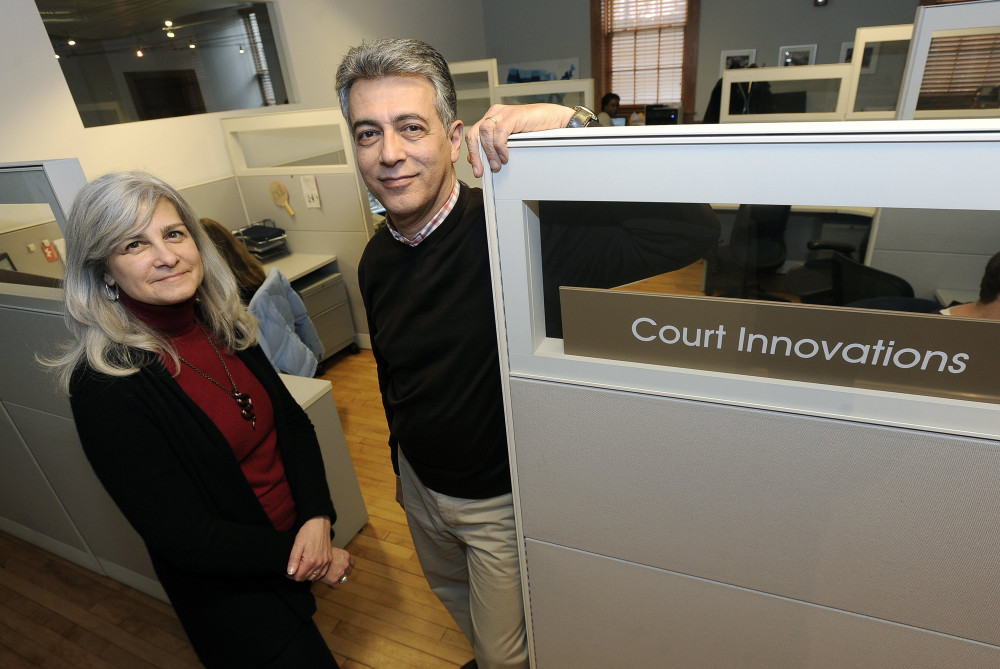By Nathan Bomey
Detroit Free Press.
DETROIT
Traffic court is going digital.
Michigan startup Court Innovations has developed a software solution that allows drivers to settle traffic violations by negotiating in a virtual environment instead of showing up to court to fight tickets.
The model, which can also extend to other minor civil infractions, is appealing to courts because it reduces workload and increases fine collection rates. And it’s appealing to offenders who don’t have time to show up in court or simply can’t afford to take off of work.
“It really does save the court a lot of time, and people feel their voice is heard by going this way,” said MJ Cartwright, CEO of Court Innovations, the first spinoff from the University of Michigan Law School.
After about a year of product development and testing, the company has secured three clients.
But the software service reflects the kind of sensible solution that can alleviate the overburdened judicial system throughout the U.S.
In Detroit, for example, the 36th District Court’s inefficient bureaucracy and abysmal fine collection system contributed to the city’s collapse into bankruptcy.
With a system like Court Innovations, which was founded by U-M Law Professor J.J. Prescott and former law student Ben Gubernick, courts can refocus their efforts on critical cases instead of minor issues that bog down the docket.
Here’s how it works:
-You are assessed a ticket or a fine for a driving violation or other infraction.
-If you’re willing to admit guilt but would like to negotiate for a lesser charge, you compose an explanation of your circumstances, perhaps even a justification of your actions, and submit it through the court’s website.
“They’re pretty well-thought-out and non-confrontational, which is different than being in court,” Cartwright said.
-An adjudicator considers your case and decides whether to lower your charge. The offender is notified via email or text message.
-You decide whether to accept the reduced penalty. If you accept, you pay your fine immediately online or set up a payment system. If you reject the deal, you still have the option to plead your case in open court.
The process can also be applied to offenders with minor outstanding warrants, such as a misdemeanor for driving without a license.
“You can’t go in and negotiate a murder plea,” Cartwright said.
The system needs to be customized for each individual court’s website, but chief technical officer Saaed Fattahi is building digital infrastructure that can be tweaked and deployed quickly for new customers.
About 50 percent of the people who have used the system so far are accessing it from a mobile device.
“We want to go national,” Fattahi said. “The core software is not rocket science. It’s just building one platform that can handle all these different variations.”
Court Innovations envisions reaping revenue from transaction fees, setup fees and a cut of paid fines. So far, the company has navigated its growth trajectory with funding from U-M’s Third Century Initiative, which backs early-stage U-M ideas. But the firm is expected to hit the venture fundraising trail to accelerate its growth.
The firm has attracted a diverse leadership team with deep roots in Ann Arbor’s entrepreneurial ecosystem. With about seven employees right now in an office in downtown Detroit, Court Innovations expects to expand quickly as it secures more customers. Cartwright and product director Tracy Davis are former employees of HealthMedia, one of the Ann Arbor tech scene’s startup successes, which was acquired by Johnson & Johnson several years ago.
Davis, a former newspaper reporter, said she’s “learning to speak court and translating it into geek” to ensure the company is developing usable solutions for its customers.
“I think there’s a huge potential for this because government is one of the last industries that hasn’t modernized their IT. They’re stuck in the past,” said Andrew Iacco, a user experience software developer. “So the expectation on the court’s side is very low. We come in with this solution – this is great.”














































































































































































































































































































































































